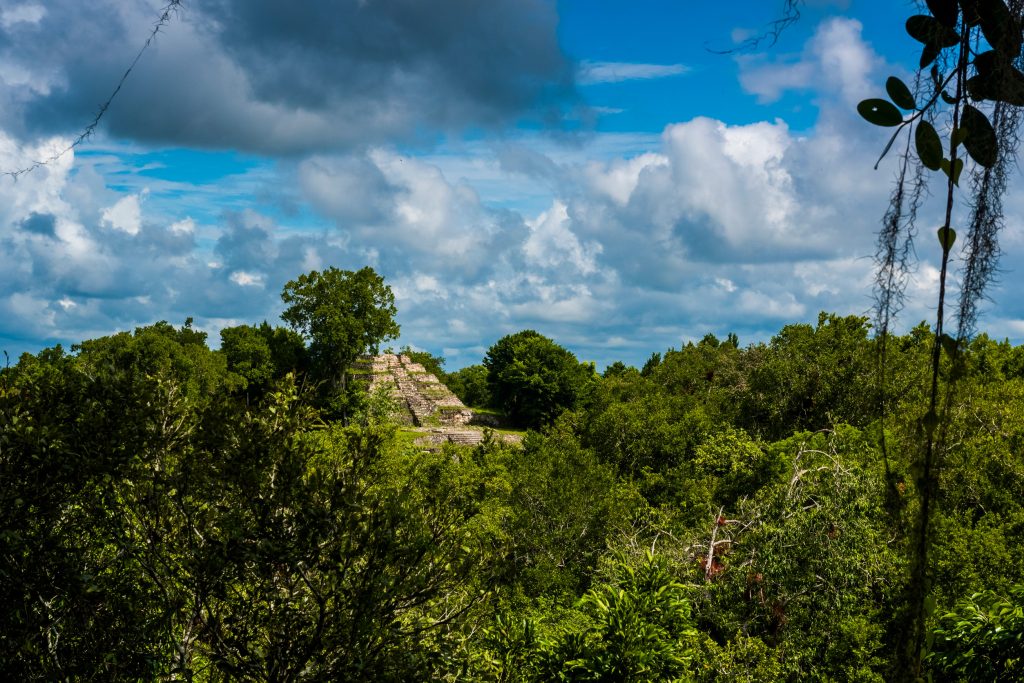
www.optimistdaily.com
Mexico, Guatemala, and Belize unite to protect Great Mayan Jungle
BY THE OPTIMIST DAILY EDITORIAL TEAM
On August 15, Mexico, Guatemala, and Belize announced a bold regional pact: the creation of the Great Mayan Jungle Biocultural Corridor, a sprawling reserve that will cross national borders to protect one of the world’s most vital tropical forests. Covering more than 14 million acres of jungle across southern Mexico and northern Central America, the new reserve would be the second-largest in the Americas after the Amazon.
The goal is ambitious: curb deforestation, keep out criminal gangs, and preserve Indigenous land from the encroachment of ranchers, miners, and loggers. But officials know that success will hinge on balancing environmental goals with hard realities on the ground.
Security first—but not only
“This is not primarily an environmental battle,” Guatemala’s Environment Minister Patricia Orantes explained. “We’re talking about the Guatemalan state needing to retake control of its territory.” She underscored that a security presence is essential because much of the area has been abandoned to organized crime.
Environmental groups have long pointed out the dangers: clandestine airstrips used by cocaine traffickers, smugglers guiding migrants north, and rampant illegal logging. Mexico’s Environment Secretary Alicia Bárcena agreed that law enforcement must play a role: “We’re not going to protect the forest ourselves—the security secretary has to help, the army.”
But both ministers acknowledged that troops alone won’t secure the corridor. Experience in southern Mexico has shown that organized crime embeds itself in economically struggling communities. Unless residents see real opportunities, illicit networks will remain.
Turning communities into allies
“The key,” said Guatemalan lawyer and environmental activist Rafael Maldonado, “is to convert communities that are believed to participate in drug trafficking into allies of the park.”
That means offering viable alternatives. One proposal involves expanding Mexico’s “Sowing Life” program, which pays landowners to grow trees for fruit or timber. The program currently has a $2 billion budget, though it has faced criticism for incentivizing deforestation in Campeche state. Bárcena noted that reforms are underway to better align the program with conservation goals.
Mexican sustainability expert Juan Carlos Franco emphasized the dual role of government and civil society. Security is crucial, he said, but must be paired with community partnerships. “Communities oriented toward the biocultural management of the territory can overcome despite the crime—that’s the most revealing message.”
Avoiding destructive megaprojects
Another challenge will be resisting projects that promise development but undermine conservation. In Guatemala, President Bernardo Arévalo has already declined to renew the contract of a petroleum company operating in the Maya Biosphere Reserve for four decades. Orantes confirmed that his administration will not permit megaprojects in the new corridor: “When access is opened in the forest it becomes difficult to control everything that follows.”
Mexico’s controversial Maya Train line, that has been running 950 miles around the Yucatán Peninsula since late 2023, does not cross into the new reserve, Bárcena stressed. Still, activists remain wary. Some, like Pedro Uc in the Yucatán, question the government’s commitment, given that the same ruling party backed the train. Others, like Franco, believe the best path forward is to keep pressure on all three governments to follow through.
To reinforce oversight, the corridor will be governed by a council of environmental authorities and an Indigenous advisory council. Any project proposed within the reserve must pass through these bodies before approval.
Building a roadmap
Guatemala is contributing the largest portion of land, incorporating 27 existing protected areas into the corridor. Belize, too, has pledged to collaborate, though it has expressed interest in extending the Maya Train, something Arévalo has already ruled out on Guatemalan territory.
By the end of August, the three countries had formed a joint committee to design a roadmap. Over the next month, the plan will define which institutions are involved, how responsibilities are shared, and how the reserve is funded. Bárcena estimated that an initial $6 million could be mobilized to get the corridor off the ground.
Orantes made clear the vision guiding the effort: “We don’t want it to be just anything there, we don’t want it to be an international cooperation agenda, nor a business agenda. We want it to be the Maya forest agenda.”
A long-term vision rooted in optimism
If realized, the Great Mayan Jungle Biocultural Corridor could mark a turning point for conservation in the Americas. It is a sweeping reminder that solutions to climate and biodiversity crises will not come from governments alone but from communities, Indigenous leadership, and regional cooperation.
As Franco put it, success will come where people and ecosystems thrive together: “The most revealing message is that communities oriented toward the biocultural management of the territory can overcome despite the crime.”
The path ahead is difficult, but for millions of people and for one of the planet’s richest forests, the stakes could not be higher.The post Mexico, Guatemala, and Belize unite to protect Great Mayan Jungle first appeared on The Optimist Daily: Making Solutions the News.










